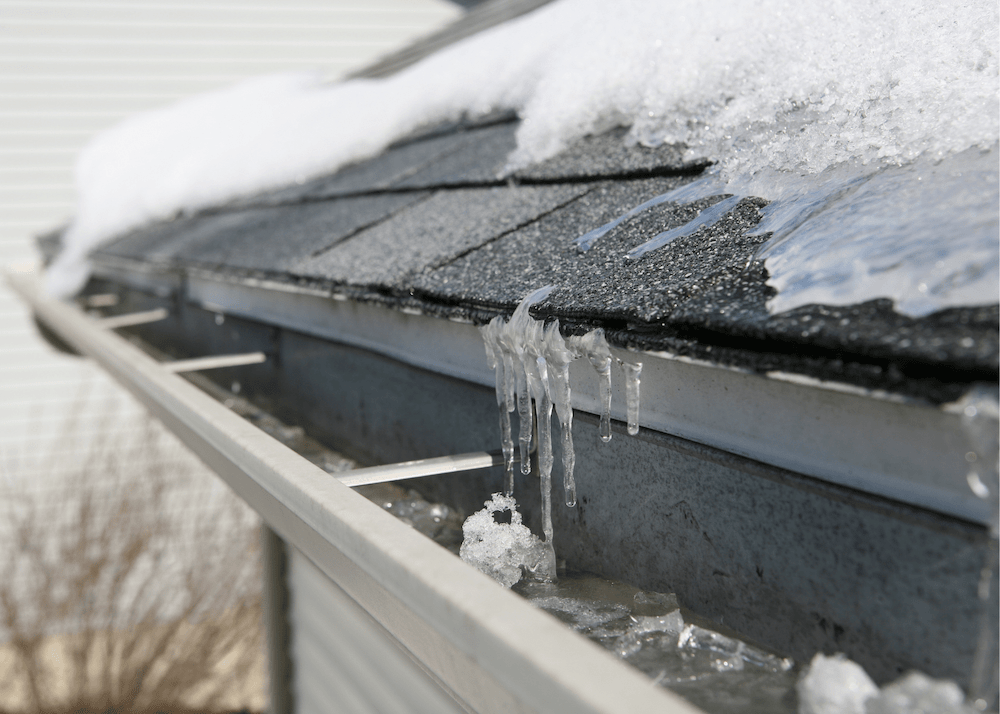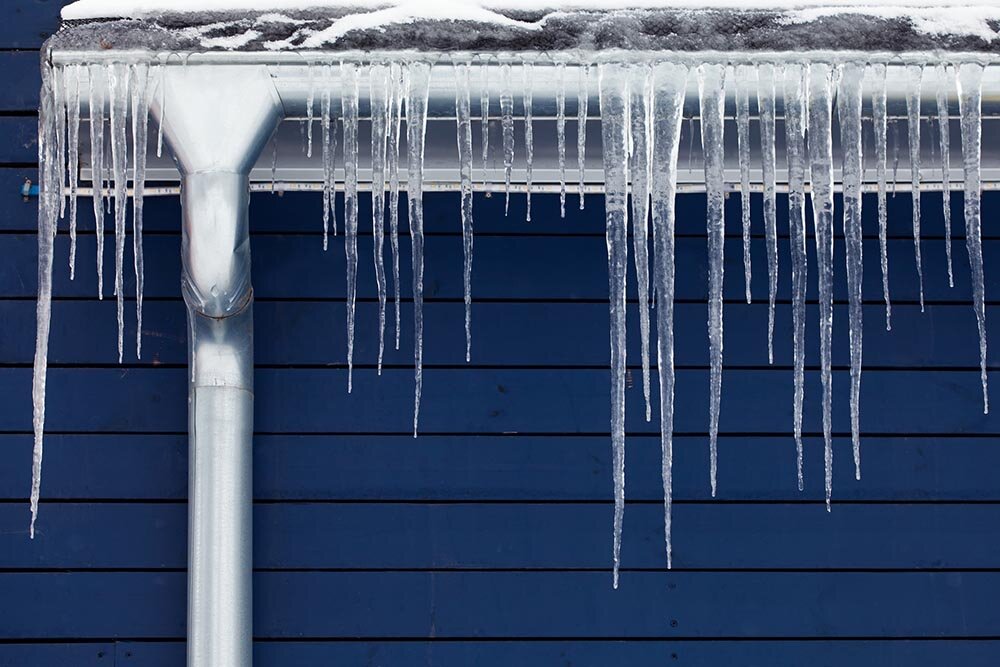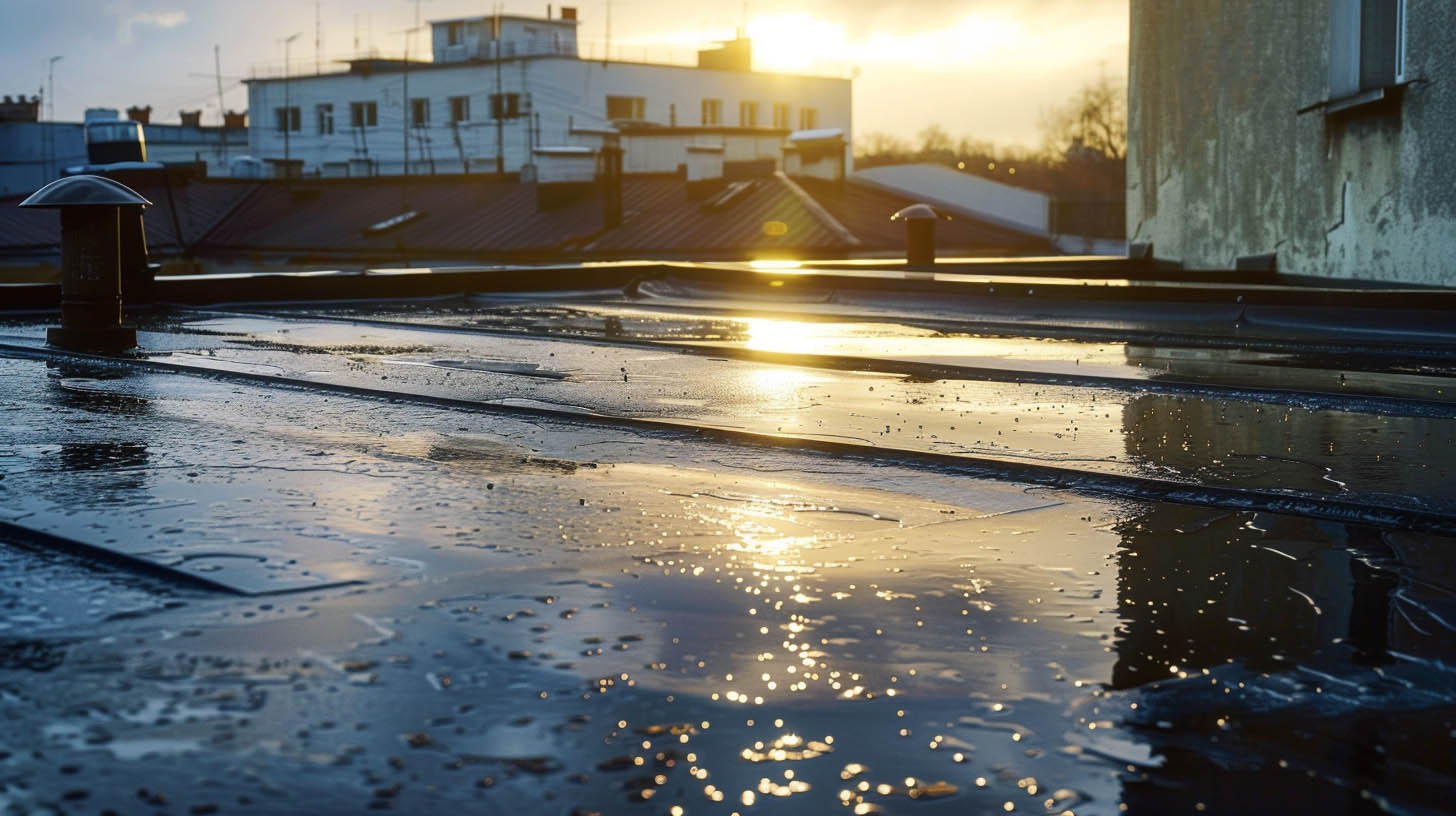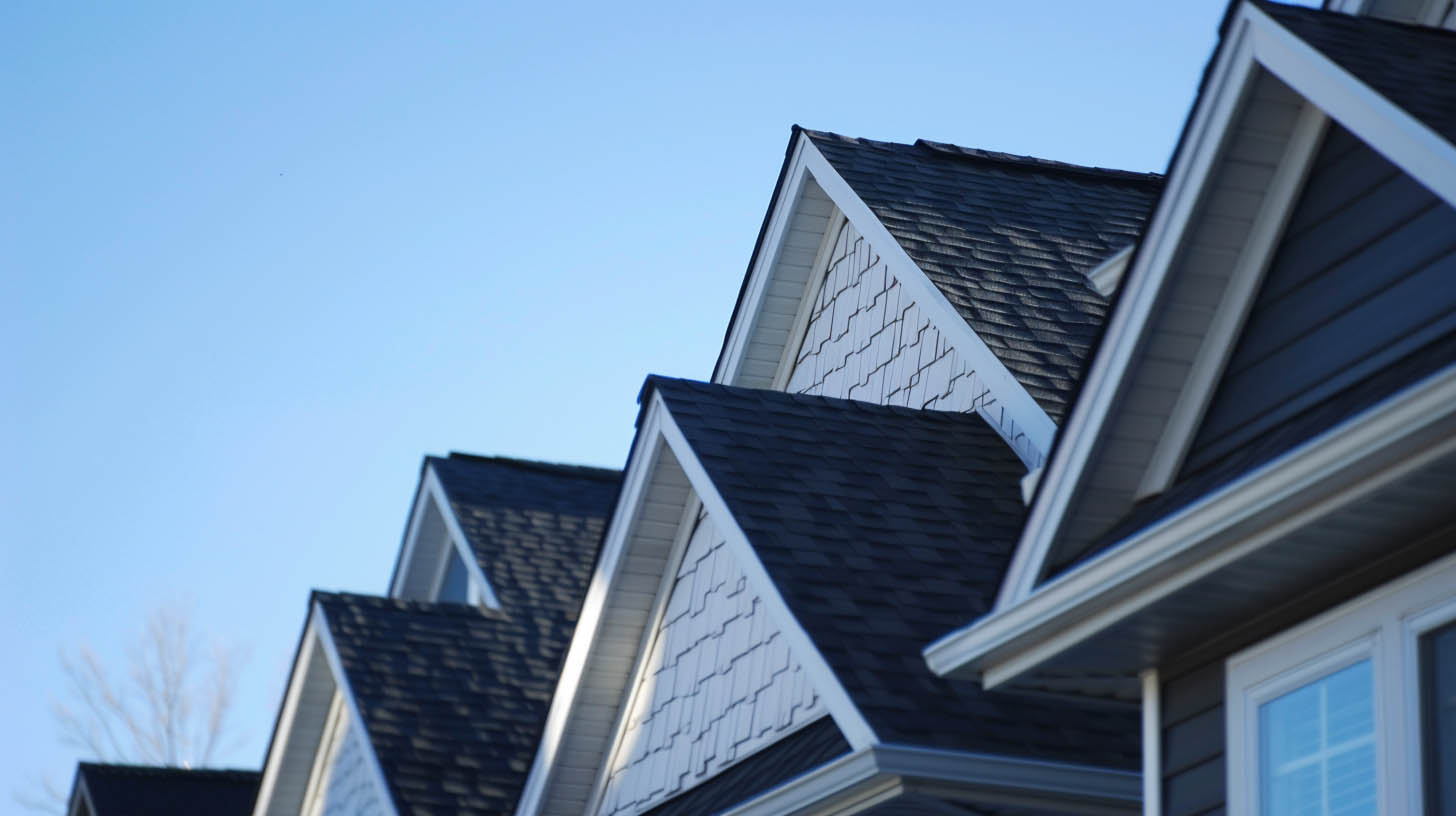
Winter is a magical season, but for homeowners, it often brings a less enchanting visitor—ice dams. These pesky formations on your roof can lead to serious issues if not addressed promptly. In this guide, we’ll delve into the world of ice dams and explore effective ice dam prevention methods, all through the eyes of an experienced roofing specialist.
Ice Dam Prevention
is Important

How Do They Form?
Ice dams are sneaky culprits that form when snow on your roof melts and refreezes at the edges. This creates a dam that traps subsequent melting snow, causing it to seep under shingles and wreak havoc on your home.
Contributing Factors
Several factors contribute to the formation of ice dams, including inadequate insulation, poor ventilation, and the pitch of your roof. Understanding these elements is crucial in devising a foolproof ice dam prevention plan.
Potential Damage
Left unchecked, ice dams can lead to water damage, compromised structural integrity, and even mold growth. Prevention is not just a luxury; it’s a necessity for maintaining a healthy and durable roof.
Top 8 Preventative Measures
#1 – Get a Thorough Roof Inspection
Before diving into ice dam prevention methods, conduct a comprehensive roof inspection. Identify vulnerable areas, potential weak points, and assess the overall condition of your roofing structure.
Check All Vulnerable AreasSome areas are more prone to ice dam formation than others. That’s why it’s important to call a roofing specialist to inspect the following common trouble spots:
- Valleys: Valleys are the inclined angles formed where two roof slopes meet. They are susceptible to ice dam formation because snow and ice tend to accumulate in these low points.
- Dormers: Dormers, being projected on a sloped roof, can create areas where snow and ice may accumulate. The unique architecture of dormers can disrupt the smooth flow of melting snow, contributing to ice dams.
- Intersecting Roof Surfaces: Where different roof surfaces meet, such as at the intersection of a main roof and an attached garage or an extension, there is an increased likelihood of ice dam formation.
- Gutters and Downspouts: Clogged gutters and downspouts can exacerbate ice dam issues by impeding the proper flow of melted snow and ice. Clearing debris from gutters and ensuring downspouts direct water away from the roof can prevent ice dam formation.
- Roof Eaves: The eaves, or overhanging edges of a roof, are particularly vulnerable to ice dams. As heat escapes from the interior of the house, it can melt the snow on the roof, which then refreezes at the colder eaves.
- Low-Slope Roofs: Low-slope roofs pose an increased risk of ice dam formation due to slower water runoff. The lack of natural drainage on these roofs can lead to the accumulation of snow and ice, creating ideal conditions for ice dams.
#2 – Check Roof Pitch & Insulation
The pitch of your roof plays a vital role in ice dam prevention. A roofing specialist will consider this, along with proper insulation and ventilation, to create a harmonious defense against ice dams.
Attic Insulation TechniquesEnsuring your attic is well-insulated is a key component of ice dam prevention. Proper insulation helps maintain a consistent temperature on your roof, preventing the uneven melting that leads to dam formation.
Consistent Insulation LevelsInconsistencies in insulation can create hot spots on your roof, contributing to ice dam formation. Maintain uniform insulation levels throughout your attic to counter this issue effectively.
Addressing Gaps and Weak PointsEven the smallest gaps or weak points in your insulation can compromise its effectiveness. Seal any openings or vulnerable areas to fortify your insulation barrier against the cold.
#3 – Ventilation Strategies
Attic Ventilation ImportanceProper attic ventilation is a powerful ally in the fight against ice dams. It helps regulate temperature, preventing the conditions that lead to dam formation.
Soffit and Ridge VentsInstalling soffit and ridge vents promotes air circulation, maintaining a balanced environment in your attic. These vents work together to ensure a consistent and effective ventilation system.
Balancing Intake and Exhaust VentilationAchieving the right balance between intake and exhaust ventilation is crucial. A roofing specialist will assess your specific needs to create a ventilation system that maximizes ice dam prevention efforts.
#4 – Roofing Materials & Design Solutions
Ice Dam-Resistant MaterialsSelecting roofing materials designed to resist ice dams is a smart move. Consult with your roofing specialist to explore options that provide an extra layer of protection against winter’s icy grip.
Ice and Water Shield UnderlaymentInvesting in a quality ice and water shield underlayment adds an additional barrier against moisture infiltration. Proper installation of this underlayment is key to its effectiveness.
Installation Techniques for Durability#5 – Gutter Maintenance
Clearing DebrisA clogged gutter is a recipe for disaster when it comes to ice dams. Regularly clear leaves, twigs, and other debris from your gutters to maintain a clear path for melting snow.
Gutter GuardsConsider installing gutter guards to prevent debris buildup. These nifty devices keep leaves and other materials out while allowing water to flow freely, reducing the risk of ice dam formation.
Regular Inspections and RepairsRoutine inspections of your gutters are essential. Look for signs of damage or sagging and address issues promptly to ensure your gutter system is in optimal condition.
#6 – Roof Snow Removal
Even the best materials need proper installation. Work with your roofing specialist to ensure that your chosen roofing materials are installed using techniques that enhance their durability and effectiveness.
Safe Snow Removal MethodsRemoving excessive snow from your roof is a proactive measure against ice dams. However, it’s crucial to do so safely. Use tools designed for the job and exercise caution to avoid damaging your roof.
Professional Snow Removal ServicesWhen in doubt, enlist the help of professionals for snow removal. They have the expertise and equipment to safely and effectively clear your roof, reducing the risk of ice dam formation.
Risks of DIY Snow RemovalWhile the DIY spirit is commendable, tackling snow removal on your own can be risky. Avoid potential accidents and damage by considering professional services for this crucial task.
#7 – Periodic Roof Inspections
Don’t wait for a problem to arise. Schedule periodic roof inspections with a specialist to catch potential issues early and implement preventative measures.
#8 – Emergency Response Plans
In severe winter weather, having an emergency response plan in place is essential. Know who to contact and have a plan for addressing urgent roofing issues to prevent extensive damage.
Learn more about how to winterize your roof for cold weather.
Winter’s Defense: Safeguarding Your Roof with Proactive
Ice Dam Prevention

In the quest to protect your home from the clutches of ice dams, proactive measures are your best defense.
By following the guidance of experienced roofing specialists and implementing these ice dam prevention methods, you’ll be well-equipped to face winter’s challenges head-on.
Remember, a little prevention goes a long way in ensuring the longevity and durability of your roof. Give us a call to discuss: 412-218-7082 for a free consultation.


